The Cardinals of the Holy Roman Church (original) (raw)
The Cardinals of the Holy Roman Church Biographical Dictionary Pope Leo XIII (1878-1903) Consistory of June 22, 1903 (XXVII)
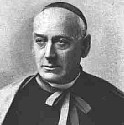
(141) 1. NOCELLA, Carlo
(1826-1908)
Birth. November 25, 1826 (1), Rome, Papal States. From a humble family. Son of Vincenzo Nocella and Maria Salvati.
Education. On April 7, 1838, he entered the Pontifical Roman Athenaeum of S. Apollinare, Rome, where he earned a doctorate in utroque iuris, both canon and civil law.
Priesthood. Ordained, September 2 (2), 1849. Professor of belle letters and rhetoric at the Pontifical Roman Athenaeum of S. Apollinare, Rome. Because of his talent as a Latinist, he was often commissioned to compose poems and commemorative inscriptions (3); that talent earned him the appointment as Arcade under the name Leofrono Locrense, which took place between February 1850 and February 1854. Assistant to the secretary of Latin Letters, Monsignor Francesco Mercurelli, in 1868; in his new role, he was responsible for drawing up important documents for the First Vatican Council, which opened on December 8, 1869; and the papal bull by which Pope Pius IX suspended the council on October 20, 1870, was prepared by Monsignor Nocella, with revisions by Cardinals Annibale Capalti and Luigi Bilio, B. Named secretary of Latin Letters in April 1870. Canon of the patriarchal Liberian basilica in 1871. Protonotary apostolic de numero participantium, March 24, 1874. Canon of the patriarchal Vatican basilica in 1874. On February 17, 1878, at the death of Pope Pius IX, he delivered the oration pro pontefice defuncto (4) in the Sistine Chapel before the Sacred College of Cardinals and the Roman prelature he concluded the oration with the auspice of the beatification of the late pope. He was confirmed by the new pope, Leo XIII, as secretary of Latin Letters. Named secretary of Briefs to the Princes, December 5, 1884. On March 22, 1888, he was named ordinary member of the Pontifical Roman Academy of Archaeology; as such, he wrote the dedication to Pope Leo XIII placed in the opening Dissertations of the Pontifical Academy of Roman archeology in 1894; in June 1903, following his promotion to the cardinalate, he was transferred to the class of honorary members of the academy. On November 7, 1889, he delivered in the Sistine Chapel the funeral oration for King Luís I of Portugal; the oration was printed in Rome in that same year. Secretary of the S.C. Consistorial and of the Sacred College of Cardinals, March 21, 1892.
Episcopate. Elected titular patriarch of Antioch, June 22, 1899. Consecrated, July 16, 1899, altar of the Chair of the patriarchal Vatican basilica, by Cardinal Mariano Rampolla del Tindaro, secretary of State, assisted by Felix Maria de Neckere, titular archbishop of Melitene, economous and secretary of the Fabric of the patriarchal basilica of St. Peter, and by Casimiro Gennari, titular archbishop of Lepanto, assessor of the Supreme S.C. of the Holy Office. Transferred to the titular Latin patriarchate of Constantinople, April 18, 1901. His promotion to the cardinalate was supported by Cardinal Mariano Rampolla del Tindaro, secretary of State.
Cardinalate. Created cardinal priest in the consistory of June 22, 1903; received red hat and title of S. Callisto, June 25, 1903. Participated in conclave of 1903, which elected Pope Pius X; he convinced the pope-elect to accept his election. In spite of his multiple occupations, he continued to hear confessions daily.
Death. July 22, 1908, in Rome, from a progressive paralysis that had struck him in 1906. Exposed in his title, S. Callisto; and buried in the chapel of the Reverend Canons of patriarchal Vatican basilica, Campo Verano cemetery, Rome (5).
Bibliography. "Carlo Nocella" in "Cardinali defunti." Annuario pontificio per l'anno 1914, Città del Vaticano : Tipografia poliglotta vaticana, 1913, p. 61; Daniel, Charles; Paul-Marie Baumgarten; Antoine de Waal. Rome; le chef suprême l'organisation et l'administration centrale de l'église. Paris : Plon, 1900, p. 679; LeBlanc, Jean. Dictionnaire biographique des cardinaux du XIXe siècle : contribution à l'histoire du Sacré Collège sous les pontificats de Pie VII, Léon XII, Pie VIII, Grégoire XVI, Pie IX et Léon XIII, 1800-1903. Montréal : Wilson & Lafleur, 2007. (Collection Gratianus. Série instruments de recherche), p. 687; Ritzler, Remigium, and Pirminum Sefrin. Hierarchia Catholica Medii et Recentioris Aevi. Volumen VIII (1846-1903). Patavii : Typis et Sumptibus Domus Editorialis "Il Messaggero di S. Antonio" apud Basilicam S. Antonii, 1979, pp. 42, 47, 107 and 224.
Webgraphy. Biography by Daniele Pellacani, in Italian, Dizionario Biografico degli Italiani - Volume 78 (2013), Treccani; engravings, photograph and arms, Araldica Vaticana.
(1) This is according to Ritzler, STRONG>Hierarchia Catholica Medii et Recentioris Aevi, VIII, 107; and Daniel, Rome; le chef suprême l'organisation et l'administration centrale de l'église, p. 679. "Cardinali defunti." Annuario pontificio per l'anno 1914, p. 61; and his biography in Italian, lined above, say that he was born on November 26, 1826.
(2) This is according to Ritzler, Hierarchia Catholica Medii et Recentioris Aevi, VIII, 107; and his biography in Italian, linked above. Daniel, Rome; le chef suprême l'organisation et l'administration centrale de l'église, p. 679, indicates that he was ordained on September 8, 1849.
(3) Among his early poems is the one on the Liberian basilica dedicated to Pope Gregory XVI; in 1864, he composed the inscriptions for the tercentenary celebrations of the Roman Seminary; in 1867, on the occasion of the eighteenth centenary of the martyrdom of Sts. Peter and Paul, he wrote the texts for the banners placed on the facade and in the vestibule of St. Peter's Basilica; on November 23, 1867, for the funeral in memory of the French and papal soldiers who fell in the battle of Mentone, celebrated in the Lateran basilica, he composed an epigraph and the four inscriptions included in the memorial; on the occasion of the visit of Pope Pius IX, December 5, 1867, to the botanical gardens of Rome to see the skeleton of a whale found near Civitavecchia, he wrote a poem on the cetaceans, which was affixed to the door of the room; for the Academy of Arcadia, in addition to various poems to celebrate the second centenary (December 1890-June 1891), he composed the inscription for the meeting of March 7, 1880 in honor of St. Thomas Aquinas and the encyclical Aeterni Patris; then, he wrote the inscription for the statue of St. Thomas Aquinas placed in the Vatican Apostolic Library on January 1, 1888, gift of the Catholic seminaries to Pope Leo XIII on the occasion of his sacerdotal jubilee; he also composed the inscriptions for the commemorative medals of the thirteenth, fourteenth and fifteenth year of the pontificate of Pope Leo XIII; from 1886, he looked after Latin epigraphy devoting a series of studies to the graffiti inscriptions in the Excubitorium della VII Coorte dei Vigili, discovered in 1866 in Monte Fiore at the church of St. Grisogono; in 1886, he published Sebaciaria, Emituliarius. Osservazioni di M. Carlo Nocella (Roma 1886), which was followed by Osservazioni sull'Emituliarius di L. Cantarelli (Roma 1887); then, Le iscrizioni graffite nell'escubitorio della Settima Coorte dei Vigili (Roma 1887); and Le iscrizioni della Settima Coorte dei Vigili in Dissertations of the Pontifical Roman Academy of Archeology, s. 2, VI (1896), pp. 131-160.
(4) The oration of Monsignor Nocella was published by Father Antonio Piolanti as "Le gesta e le virtù di Pio IX : discorso al S. Collegio del 17 febbraio 1878" (Città del Vaticano : Pontificia Accademia Teologica Romana al Palazzo dei Canonici, 1988).
(5) This is the text of the inscription on his tomb, kindly provided by Mr. Eman Bonnici, from Malta:
MEMORIAE · ET · QVIETI CAROLI · NOCELLA CARD · TIT · CALLISTO ANTEA · CANONICI · VATIC QVI · VARIIS · MVNERIBVS · FIDELITER · FVNCTVS ET · LITTERARVM · PERITIA · SPECTATVS PIE · VIXIT · ANNOS · LXXXII DEC · XI · CAL · AVG · A · MCMVIII
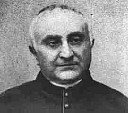
(142) 2. CAVICCHIONI, Beniamino
(1836-1911)
Birth. December 27, 1836, Veiano, diocese of Viterbo, Italy.
Education. Studied at La Sapienza University, Rome, where he obtained doctorates in theology and in utroque iuris).
Priesthood. Ordained, December 18, 1859. Professor of literature in Vetralla. Resigned position and continued studies in Rome. Entered the "studio" of the S.C. of the Council; officer, 1872. Minutant, S.C. Propaganda Fide, 1875, in charge of the United States. Defender of the matrimonial bond, S.C. of the Council, 1883. Domestic prelate.
Episcopate. Elected titular archbishop of Amida and appointed apostolic delegate in Ecuador, Perú and Bolivia, March 21 (1), 1884. Consecrated, April 27, 1884, church of S. Maria dell'Assunta, annexed to the North American College, Rome, by Cardinal Luigi Serafini, assisted by Mario Mocenni, titular archbishop of Eliopoli, substitute of the Secretariat of State, and by Domenico Maria Jacobini, titular archbishop of Tiro, secretary of the S.C. of Propaganda Fide. Canon of the patriarchal Lateran basilica, July 4, 1885 (2). Transferred to the titular see of Nazianzo, January 11, 1894. Pro-secretary of the S.C. of the Council, October 22, 1895. Secretary of the S.C. of the Council, January 11, 1900.
Cardinalate. Created cardinal priest in the consistory of June 22, 1903; received red hat and title of S. Maria in Aracoeli, June 25, 1903. Participated in the conclave of 1903, which elected Pope Pius X. Prefect of the S.C. of Studies from March 11, 1910 until his death.
Death. April 17, 1911, Rome. Buried, crypt of the chapel of the S.C. of Propaganda Fide, Campo Verano Cemetery, Rome.
Bibliography. "Cardinali defunti." Annuario pontificio per l'anno 1914, Città del Vaticano : Tipografia poliglotta vaticana, 1913, pp. 62-63; Daniel, Charles; Paul-Marie Baumgarten; Antoine de Waal. Rome; le chef suprême l'organisation et l'administration centrale de l'église. Paris : Plon, 1900, p. 681; Ritzler, Remigium, and Pirminum Sefrin. Hierarchia Catholica Medii et Recentioris Aevi. Volumen VIII (1846-1903). Patavii : Typis et Sumptibus Domus Editorialis "Il Messaggero di S. Antonio" apud Basilicam S. Antonii, 1979, pp. 42, 50, 95 and 404.
Webgraphy. Arms, engraving and photographs, Araldica Vaticana.
(1) This is according to Ritzler, Hierarchia Catholica Medii et Recentioris Aevi, VIII, 95; Daniel, Rome; le chef suprême l'organisation et l'administration centrale de l'église, p. 681, says that he was elected on March 12, 1884.
(2) This is according to Ritzler, Hierarchia Catholica Medii et Recentioris Aevi, VIII, 95; Daniel, Rome; le chef suprême l'organisation et l'administration centrale de l'église, p. 681, says that he was named on August 4, 1889.
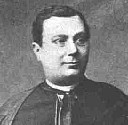
(143) 3. AIUTI, Andrea
(1849-1905)
Birth. June 17 (1), 1849, Rome, Italy. Son of Pietro Aiuti, of a noble family originally from Trapani, and Teresa Ramella-Ragnina-Leoni, descendant of families from Genoa and Messina.
Education. Studied at the Pontifical Roman Seminary, where he obtained doctorates in philosophy, theology and canon law.
Priesthood. Ordained, September 22, 1871, Rome. Secretary to Cesare Roncetti, internuncio in Brazil, 1876; later, chargé d'affaires. Attached to the secretariat for the affairs of the Oriental Church at the S.C. of Propaganda Fide. Privy chamberlain supernumerary. Transferred to S.C. of the Council. Secretary of the internunciature in Brazil, 1876; chargé d'affaires. Secretary of the nunciature in Bavaria, 1879; auditor, 1882. Auditor of apostolic delegation in India, 1886.
Episcopate. Elected titular archbishop of Achrida and appointed apostolic delegate in India, March 31, 1887 (2). Consecrated, May 1, 1887, cathedral of Bombay, India, by George Porter, S.J., archbishop of Bombay, assisted by Pietro Caprotti, P.I.M.E., bishop of Hyderabad, and by Bernhard Beiderlinden, S.J., bishop of Poona. Canon of the patriarchal Lateran basilica. Secretary of the S.C. of Propaganda Fide, for the affairs of the Oriental rite, July 24, 1891 (3). Collaborated in the preparation of the encyclical concerning the union with the Oriental Churches. Nuncio in Bavaria, June 7 (4), 1893. Transferred to the see of Damietta, June 12, 1893. Nuncio in Portugal, September 26 (5), 1896. Assistant at the Pontifical Throne, January 4, 1898.
Cardinalate. Created cardinal priest in the consistory of June 22, 1903. Participated in the conclave of 1903, which elected Pope Pius X. Received the red hat and the title of S. Girolamo degli Schiavoni, November 12, 1903.
Death. April 28, 1905, of complications related to liver disease, in Rome. Exposed in the church of S. Giovanni dei Fiorentini and buried in the family tomb, Campo Verano Cemetery, Rome. There is a street in Rome named after him.
Bibliography. "Cardinali defunti." Annuario pontificio per l'anno 1914, Città del Vaticano : Tipografia poliglotta vaticana, 1913, pp. 58-59; Daniel, Charles; Paul-Marie Baumgarten; Antoine de Waal. Rome; le chef suprême l'organisation et l'administration centrale de l'église. Paris : Plon, 1900, p. 685; De Marchi, Giuseppe. Le nunziature apostoliche dal 1800 al 1956. Pref. di Antonio Samoré. Roma : Edizioni di Storia e letteratura, 1957, pp. 57 and 215; Ritzler, Remigium, and Pirminum Sefrin. Hierarchia Catholica Medii et Recentioris Aevi. Volumen VIII (1846-1903). Patavii : Typis et Sumptibus Domus Editorialis "Il Messaggero di S. Antonio" apud Basilicam S. Antonii, 1979, pp. 42, 48, 73 and 239.
Webgraphy. Biography by Fausto Fonzi, in Italian, Dizionario Biografico degli Italiani - Volume 1 (1960), Treccani.
(1) This is according to all the sources consulted except Daniel, Rome; le chef suprême l'organisation et l'administration centrale de l'église, p. 685, which says that he was born on July 17, 1849.
(2) Ritzler, Hierarchia Catholica Medii et Recentioris Aevi, VIII, 73, says that he was elected archbishop and appointed apostolic delegate on the same day; Daniel, Rome; le chef suprême l'organisation et l'administration centrale de l'église, p. 685, says that he was elected archbishop on March 31, 1887 and that he had been appointed apostolic delegate on December 7, 1886.
(3) This is according to Ritzler, VIII, 73; Daniel, Rome; le chef suprême l'organisation et l'administration centrale de l'église, p. 685, says that he was named on February 2, 1892.
(4) This is according to Ritzler, Hierarchia Catholica Medii et Recentioris Aevi, VIII, 73; De Marchi, Le nunziature apostoliche dal 1800 al 1956, p. 57, says that he was named on May 16, 1893.
(5) This is according to Ritzler, Hierarchia Catholica Medii et Recentioris Aevi, VIII, 239; De Marchi, Le nunziature apostoliche dal 1800 al 1956, pp. 57 and 215; and Daniel, Rome; le chef suprême l'organisation et l'administration centrale de l'église, p. 685, say that he was named on July 25, 1896.
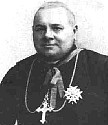
(144) 4. TALIANI, Emidio
(1838-1907)
Birth. April 19, 1838, Montegallo, diocese of Ascoli-Piceno, Italy. Son of Nicola Taliani and Rosa Cecchini. Nephew of Father Domenico Taliani, who in 1849 headed in Ascoli some militias to defend the papal power. His first name is also listed as Emygdius.
Education. Studied at the University of Rome, where he obtained doctorates in theology and utroque iure, both canon and civil law.
Priesthood. Ordained, October 20, 1861. Further studies, Rome. Secretary to Cardinal Carlo Sacconi. Privy chamberlain supernumerary. Auditor of the nunciature in Bavaria, May 16, 1869; chargé d'affaires, 1870. Domestic prelate of His Holiness, 1871. Auditor of the nunciature in Paris, 1875-1879. Referendary prelate of the Supreme Tribunal of the Apostolic Signature, March 17, 1880. Protonotary apostolic participant, March 16, 1885. Auditor of the Sacred Roman Rota, May 18, 1885. Vicar of the cardinal archpriest of the patriarchal Lateran basilica, 1889.
Episcopate. Elected titular archbishop of Sebastea, June 22, 1896. Consecrated, June 29, 1896, patriarchal Lateran basilica, Rome, by Cardinal Lucido Maria Parocchi, vicar general of Rome, assisted by Edmond Stonor, titular archbishop of Trebisonda, and by Beniamino Cavicchioni, titular archbishop of Nazianzo. Appointed nuncio in Austria, July 24 (1), 1896. Commander of the Order of Albrecht of Saxony; of the order of Francesco I of Naples; and of the Order of Carlos III of Spain. Office of the légion d'Honor of France. Decorated with the grand cross of the Austrian Order of Sankt Stefan, 1903.
Cardinalate. Created cardinal priest in the consistory of June 22, 1903. Participated in the conclave of 1903, which elected Pope Pius X. Received the red hat and the title of S. Bernardo alle terme, November 12, 1903.
Death. August 24, 1907, of cardiac syncope, in the morning, in Montegallo. Exposed in the cathedral of Ascoli and buried in the family tomb in the cemetery of Ascoli.
Bibliography. Daniel, Charles; Paul-Marie Baumgarten; Antoine de Waal. Rome; le chef suprême l'organisation et l'administration centrale de l'église. Paris : Plon, 1900, p. 684; De Marchi, Giuseppe. Le nunziature apostoliche dal 1800 al 1956 . Pref. di Antonio Samoré. Roma : Edizioni di Storia e letteratura, 1957, p. 49; Ritzler, Remigium, and Pirminum Sefrin. Hierarchia Catholica Medii et Recentioris Aevi. Volumen VIII (1846-1903). Patavii : Typis et Sumptibus Domus Editorialis "Il Messaggero di S. Antonio" apud Basilicam S. Antonii, 1979, pp. 42, 47 and 506; Squicciarini, Donato. Nunzi apostolici a Vienna. Città del Vaticano : Libreria Editrice Vaticana, 1998, pp. 236-238.
Webgraphy. Photograph and biography, in German, Wikipedia; photograps and arms, Araldica Vaticana.
(1) This is according to Ritzler, Hierarchia Catholica Medii et Recentioris Aevi, VIII, 506; Daniel, Rome; le chef suprême l'organisation et l'administration centrale de l'église, p. 684, says that he was named on August 1, 1896; De Marchi, Giuseppe. Le nunziature apostoliche dal 1800 al 1956, p. 49, says that he was named on July 18, 1896; and Squicciarini, Nunzi apostolici a Vienna, p. 236, indicates that he was named on July 12, 1896.

(145) 5. HERRERO Y ESPINOSA DE LOS MONTEROS, Orat., Sebastián
(1822-1903)
Birth. January 20, 1822, Jerez de la Frontera, diocese of Cádiz, Spain, of an illustrious family. Youngest child of Diego José Herrero y Morís (1786-1872) and his first wife, Francisca Javiera Espinosa de los Monteros y Aliaga (1793-1831), eldest daughter of the marchises of Monte Olivar. His brother Diego was canon doctoral and vicar capitular of Cádiz in 1863.
Education. Obtained a doctorate in civil and canon law, Seville. Poet and playwright, wrote among others García el Calumniador and El Conde Fernán González. Collaborated in several newspapers as well as in the edition of Los españoles pintados por sí mismos. Joined the judicial branch. Entered the Congregation of the Oratory of S. Filippo Neri in Seville in 1856.
Priesthood. Ordained, 1860. Rector of the Seminary of Cádiz, 1861; canon of the "Colegiata" of Jerez de la Frontera in 1864; provisor and vicar general of the diocese of Cádiz in 1866 and in 1868; canon archpriest of its chapter.
Episcopate. Elected bishop of Cuenca, September 17, 1875. Consecrated, November 30, 1875, Cádiz, by Félix María de Cádiz (José Félix Arriete Llano), O.F.M. Cap., bishop of Cádiz, assisted by John Baptist Scandella, bishop of Gibraltar, and by Vicente Calvo y Valero, bishop of Santander. Transferred to see of Vitoria, December 18, 1876; in June 1880, for health reasons, resigned the pastoral government of the diocese and retired to Sanlúcar de Barrameda. Appointed bishop of Oviedo, March 27, 1882. Transferred to the see of Córdoba, March 15, 1883. Published a collection of religious poetry dedicated to Pope Leo XIII. In 1888, he was elected senator of the Spanish Kingdom. Promoted to the metropolitan see of Valencia, March 24, 1898.
Cardinalate. Created cardinal priest in the consistory of June 22, 1903. Participated in the conclave of 1903, which elected Pope Pius X. Received red hat and title of Ss. Bonifacio ed Alessio, August 27, 1903.
Death. December 9, 1903, Valencia. Exposed in the metropolitan cathedral of Valencia and buried in its Chapel of the Immaculate Conception (1).
Bibliography. Echeverría, Lamberto de. Episcopologio español contemporáneo, 1868-1985 : datos biográficos y genealogía espiritual de los 585 obispos nacidos o consagrados en España entre el 1 de enero de 1868 y el 31 de diciembre de 1985 . Salamanca : Universidad de Salamanca, 1986. (Acta Salmanticensia; Derecho; 45), p. 42.
Webgraphy. Biography by Francisco Rodríguez de Coro, SDB, in Spanish, Diccionario Biográfico Español, DB~e; portrait and biography, in Spanish, archdiocese of Valencia; photographs and arms, Araldica Vaticana.
(1) This is the text of his epitaph, kindly provided by Mr. Mark West, from London, England:
Eminentissimus Ac Reverendissimus Dr. D. Sebastianus Cardinalis Herrero Et Espinosa De Los Monteros. Aundae C--sarianae Natus. Episcopus Conchensis. Victorensis Ovetensis. Cordubensis. Demum -VIV- Valentinae Ecclesiae Archiepiscopus. Vixit annos Octaginta unum. Obiit Idus Decembris AnnoM.CM.III. Iacet hic. Surrecturus in novissimo die. "Exitus aquarum deduxerunt oculi mei Quia non custodierunt legem tuam." Ps. C. XVIII v. C. XXXVI.

(146) 6. KATSCHTHALER, Johannes Baptist
(1831-1914)
Birth. May 29, 1832, Hippach, diocese of Brixen (or Bressanone), Austrian Tirol. Eighth child of Jacob Katschthaler (1778-1835), a teacher and organ player, originally from Gastein, and Theresia Gredler (1793-1851), originally from Schwendau (Zillertal)
Education. He first studied at the Borromeum in Salzburg (1845-1852). He then began studies of history in Vienna, but in 1853 he entered the Seminary of Salzburg. Already ordained, he completed his studies in theology, obtaining his doctorate at the Faculty of Salzburg in May 1862.
Priesthood. Ordained, July 31, 1855, Salzburg. Vicar of Rossen, 1857; vicar of St. Johann. Professor of the Seminary. Further studies, Salzburg. Faculty member, Theological Faculty, University of Salzburg, May 1, 1862; professor of ecclesiastical history, Innsbruck University, 1874. Canon of the cathedral chapter of Salzburg, 1880. Rector of Seminary of Salzburg, 1882.
Episcopate. Elected titular bishop of Cybistra and appointed auxiliary of Salzburg, June 4, 1891. Consecrated, July 12, 1891, Salzburg, by Johannes Haller, archbishop of Salzburg, assisted by Johannes Zwenger, bishop of Seckau, and by Joseph Kahn, bishop of Gurk. Dean of the metropolitan chapter of Salzburg, 1892. Elected archbishop by the cathedral canon of Salzburg, May 10, 1900. Confirmed by the Pope, December 17, 1900. The archbishops of Salzburg have the title of Primas Germaniæ since 1648.
Cardinalate. Created cardinal priest in the consistory of June 22, 1903. Participated in the conclave of 1903, which elected Pope Pius X. Received red hat and title of S. Tommaso in Parione, November 12, 1903. Even before being a cardinal, he could wear the red habit as a privilege of his see. With papal approval, raised the Theological Faculty of Salzburg to University. Decorated with the grand cross of the Austrian Order of Sankt Stefan, 1911.
Death. February 27, 1914, Salzburg. Buried in the metropolitan cathedral of Salzburg (1).
Webgraphy. Photographs and arms, Araldica Vaticana; Erzbischof Johannes KardinalKatschthaler (1900—1914). Skizze einer kulturkampflustigen Amtsperiode by Rupert Johannes Klieber, landesmuseum.at.
(1) This is the inscription on his vault, kindly provided by Mr. Eman Bonnici, from Malta:
IOANNES V. BAPT · KATSCHTHALER CARD · PRINC · ARCHIEPP · MCM - MCMXIV
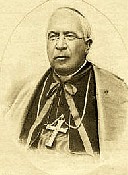
(147) 7. FISCHER, Anton Hubert
(1840-1912)
Birth. May 30, 1840, Jülich, archdiocese of Cologne, Germany, from a very humble family. Son of Wilhelm Joseph Fischer (1802-1871, a teacher, and Anna Margarethe Horrig (+1888).
Education. Initial studies at the local school and at Gymnasium Friedrich Wilhelm of Cologne (1853-1857); then studied at the University of Bonn (philosophy and theology); at Akademia of Münster; at the Seminary of Cologne; and at the University of Tübingen, where he earned a doctorate in theology.
Priesthood. Ordained, September 2, 1863, Cologne. During 25 years taught with great distinction religion, Latin and Greek at the gymnasium of Essen. Pastoral work in the Catholic press. Professor of dogmatic theology, University of Cologne. Assistant to the auxiliary bishop in the administration of the archdiocese of Cologne. Named canon of the cathedral chapter of Cologne, 1883.
Episcopate. Elected titular bishop of Juliopolis and appointed auxiliary of Cologne, February 14, 1889. Consecrated May 1, 1889, cathedral of Cologne, by Philip Krementz, archbishop of Cologne, assisted by Franciscus Antonius Hubertus Boermans, bishop of Roermond, and by Heinrich Feiten, titular bishop of Amizone. His episcopal motto was Omnibus prodesse obesse nimini. Elected archbishop by the cathedral chapter of Cologne by 13 votes of the 15 canons, November 6, 1902. Confirmed by the Pope, February 14, 1903.
Cardinalate. Created cardinal priest in the consistory of June 22, 1903; received red hat and title of Ss. Nereo ed Achilleo, June 25, 1903. Participated in the conclave of 1903, which elected Pope Pius X.
Death. July 30, 1912, after a long illness, Bad Neuenahr. Buried in the metropolitan cathedral of Cologne.
Webgraphy. Biography by Georges Goyau, in English, The Catholic Encyclopedia; his tomb, metropolitan cathedral of Cologne; his arms, photographs and portrait, Araldica Vaticana; Gymnasiallehrer, Weihbischof, Kardinal. 100. Todestag Erzbischof Antonius Kardinal Fischer, domradio.de, 30.7.2012.

TAROZZI, Vincenzo
(1849-1918)
Birth. June 11, 1849, Castelfranco Emilia, archdiocese of Bologna, Italy. He was the third child (and oldest son) of the eleven children of Paolo Tarozzi and Marcella Zoccoli. Paolo Tarozzi (1817-1907) was the local schoolmaster, esteemed to the degree that a street in the town was eventually named after him. Marcella Zoccoli was a cousin of Nicola Zoccoli, auxiliary bishop of Bologna from 1886 to 1906.
Education. Studied at the Archiepiscopal Seminary of Bologna from 1861 onwards, where he received a laureate degree in theology in 1871. In 1876, he received a degree from the University of Padua, qualifying him to teach the classical languages.
Priesthood. Ordained, December 23, 1871, in Bologna by Antonio Canzi, titular bishop of Cyrene and auxiliary bishop of Bologna. From 1876 to 1882, he was professor of classical letters and vice-rector of the Archiepiscopal Seminary of Bologna, and from 1882 onwards served as rector of the Minor Seminary of SS. Apostoli in the same city. In 1886, he was called to Rome to serve as professor of Latin at the newly-founded Institute of Higher Literature; at the same time, he served as a confessor and spiritual director to a number of religious institutes. In 1892, he was appointed secretary for Latin Letters by Pope Leo XIII, in which capacity he was responsible for the final Latin text of many important documents, including the encyclical Providentissimus Deus (1893) and the apostolic letter Apostolicae Curae (1896, on the validity of Anglican orders). On taking up this office, he was raised to the degree of domestic prelate, but was known to avoid wearing the insignia of his rank whenever possible. He resigned his office for health reasons in 1902 and took up residence in the newly founded Collegio Leonino where he continued to serve as a highly esteemed confessor and spiritual director. When the institute was closed in 1915, he moved to the Pontifical Roman Minor Seminary.
Cardinalate. According to several witnesses, Pope Leo XIII had intended to create his secretary a cardinal. A witness at Monsignor Tarozzi’s cause (see below) stated that he heard a confirmation of this story from Pope Pius X himself, who said that the monsignor declined the cardinalate up to three times (1).
Death. December 17, 1918, Rome. Buried initially in Campo Verano cemetery, Rome; in 1988 his remains were transferred to the church of San Giacomo, Castelfranco Emilia, where he had been baptized and which he had restored at his own expense (2). The cause for his beatification was opened in 1955; the diocesan phase of the process was concluded in 1964, and a decree approving the Servant of God’s writings was issued in 1972 (3).
Bibliography. Belvederi, Giulio. Dal Vaticano al calvario : mons. Vincenzo Tarozzi. Roma : Benedettine di Priscilla, 1959; Ecclesia Catholica. Sacra Congregatio pro Causis Sanctorum. Romana seu Bononien. beatificationis et canonizationis Servi Dei Vincentii Tarozzi sacerdotis saecularis (11.6.1849-17.12.1918) : positio super causae introductione. Roma : Tipografia Guerra s.r.l., 1980; Masetti Zannini, Gian Ludovico. Mons. Vincenzo Tarozzi. Segretario per le Lettere Latine del Sommo Pontefice Leone XIII. A cura della Postulazione. Bologna : Curia Arcivescovile di Bologna, 1998; Ruffini, Ernesto Scritti ascetici di Mons. Vincenzo Tarozzi segretario per le lettere latine di Leone XIII. Roma : Ferrari, 1939; Silvestri, Amato. Non la mia ma la tua volontà. Testimonianze e note biografiche del Servo di Dio Mons. Vincenzo Tarozzi. Nonatola : Tipolito Bagnoli, 1990; Tarozzi, Vincenzo. Avvisi pratici per la fruttuosa predicazione offerti ai sacerdoti novelli. Roma : Ferrari, Francesco, 1920; Tarozzi, Vincenzo. Biografia di Federico Paglia, accolito del Seminario Bolognese e per coscrizione caporale del corpo sanitario della stessa città, morto il 10 settembre 1879. Bologna : Mareggiani, 1881; Tarozzi, Vincenzo. De archiepiscopis Ecclesiae Bononiensis commentarii. Bononiae : Ex Mareggianio Officinat. Pontif., 1885; Tarozzi, Vincenzo. Esto fidelis. Sydney : Pellegrini, 1941; Tarozzi, Vincenzo. La giornata pia del buon seminarista. Catania : Off. Tip. La Stampa, 1922; Tarozzi, Vincenzo. Poesie latine in onore del sommo pontefice Leone XIII. Forli : G.B. Croppi, 1893; Tarozzi, Vincenzo. Sancti Ioannis Berchmans documenta vitae spiritualis clericis proposita : accedunt selecta ex aliis sanctis, atque oratio S. Pontificis Benedicti XV. Romae : E Schola Typ. Salesiana, 1922.
Webgraphy. Cecchetti, Igino. Monsignor Vincenzo Tarozzi: A memorable Roman Prelate, The American Ecclesiastical Review, The Catholic University of America Press, Volume 129, July-December 1953, 296-299.
(1) The witness was Monsignor Antonio Mele-Virdis; during their conversation (in 1904) Pope Pius X is said to have added the remark “Questi doveva essere al mio posto” (“he should have been in my place”). See Masetti Zannini 1998, p. 80.
(2) A memorial tablet was installed in the church in 1940, comprising a bronze portrait and the following inscription:
VINCENTIUS TAROZZI PRESBYTER DOMO CASTROFRANCO IN AEMILIA / SUMMI PONTIFICIS LEONIS XIII AB EPISTOLIS LATINIS / INTEGRITATE PRVDENTIA DOCTRINA SPECTATISSIMVS DIVINARVM / RERVM ET LITTERARVM STVDIOSVS ALVMNOS IN SPEM ECCLESIAE / SVCCRESCENTES AD PERFECTIONEM ANIMI AD CVLTVM MENTIS / IN EXEMPLVM CONFORMARE SATEGIT ET SACERDOTIBVS / QUAMPLVRIMIS VT ODOR VITAE IPSORVM DELECTAMENTVM ESSET / ECCLESIAE PATER MAGISTER OPTIMVS ADSTITIT HONORVM / CONTEMPTOR PAVPER PIISSIMVS ABSCONDITVS CVM CHRISTO / IN DEO ROMAE E PONTIFICIO SEMINARIO VATICANO AD LVCIS / SVPERNAE GAVDIA EVOLAVIT XVI KAL IANVARIAS AN DOM MCMXVIII / ARCHIPRESBYTER CLERVS POPVLVSQVE VBI PRIDIE IDVS IVNIAS / MDCCCIL SACRO LAVACRO ABLVTVS EST IN PERPETVAM SANCTAMQVE / MEMORIAM ANTISTITIS DESIDERATISSIMI HVNC TITVLVM EXSTARE / VOLVERVNT
After the translation of his remains, a further inscription was added underneath:
HIC EXUVIAE ASSERVANTUR SERVI DEI VINCENTII TAROZZI QUI ARCHIDIOCESIM BONON. ET CURIAM ROMANAM PIETATIS ET LATINITATIS MAGISTER UNICUS SCIENTIA ILLUSTRAVIT AEDIFICAVIT EXEMPLO
(3) A number of spiritual texts was collected and edited posthumously in 1939 as Scritti ascetici by his former pupil, the later Cardinal Ernesto Ruffini.
©1998-2022 Salvador Miranda.